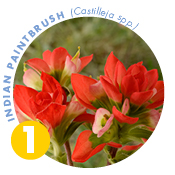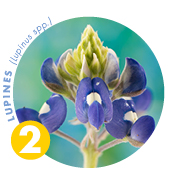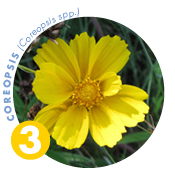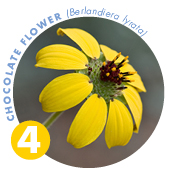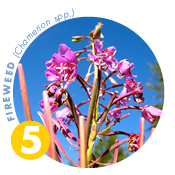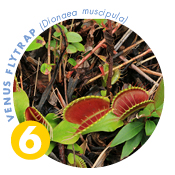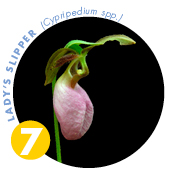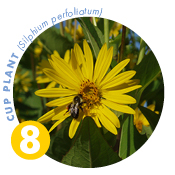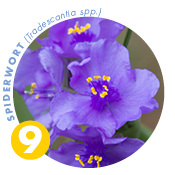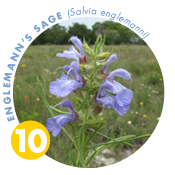10 Wildflowers That Wow
THIS WEEK, communities across the country will celebrate National Wildflower Week with events, exhibits and more in honor of wildflowers. The celebrations are intended not only to highlight the beauty of wildflowers, but also to encourage people to conserve and protect them when necessary and to landscape with them since they can require fewer resources.
There are tens of thousands of wildflowers that are native to North America. Some are quirky; others possess curious powers. Many have legends told about them. We’ve picked some of the wildest wildflowers around. Their looks or ways make them the epitome of cool.
Indian paintbrush (Castilleja spp.)
Indian paintbrush (Castilleja spp.) robs its neighbors just to survive. These plants are hemi-parasitic. They sink their roots into those of neighboring plants to steal nutrients. You can find them in many colors, from deep purple to bright red and lemon yellow. Paintbrush seed is so tiny you can plant a whole acre with several handfuls. There are millions of seeds in one pound!
Lupines (Lupinus spp.)
Lupines (Lupinus spp.) such as Texans’ beloved bluebonnet (Lupinus texensis) have their own “nitrogen makers.” Nitrogen is made when a soil bacterium called Rhizobium forms a symbiotic association with the roots of lupines. The roots form nodules around the bacterium. The bacterium takes nitrogen from the air and converts it into nitrogen compounds that the lupines can use. In return, the lupines provide a home for the bacterium.
Coreopsis (Coreopsis spp.)
Pioneers called coreopsis (Coreopsis spp.) tickseed. They put it in their mattresses to keep out bedbugs, fleas and ticks. Today, you’ll find coreopsis brightening up many a field or roadside. With abundant species across North America, coreopsis is Florida’s state wildflower.
Chocolate flower (Berlandiera lyrata)
Like tickseed, chocolate flower (Berlandiera lyrata) is in the same family as the sunflower. Wildflower Center garden designers like to edge pathways with the aromatic perennial, because who doesn’t like the smell of chocolate? Native to southwestern states, Kansas and Oklahoma, chocolate flower blooms from April all the way to November.
Fireweed (Chamerion spp.)
Fireweed (Chamerion spp.), a tall plant that grows in open areas, is often one of the first plants to appear after a wildfire or prescribed fire. Some plants need fire to prime their seeds for germination. Fire also controls weedy or woody species in open fields or prairies. Fire-dependent wildflowers are not too uncommon in hot, dry places. California has several such as whispering bells (Emmenanthe penduliflora).
Venus flytrap (Dionaea muscipula)
So well known is Venus flytrap (Dionaea muscipula) that most people wouldn’t know the plant is native only to North and South Carolina. When insects or spiders disturb any two of the six tactile bristles on the upper surface of its folded leaves, the hinged halves of the leaf snap shut, trapping the prey. A chemical secreted by the prey stimulates the flow of the plant’s digestive enzymes. Once it has digested its prey, the nutrients are absorbed and the leaf is reset. This plant is of concern to conservationists due to wild collection, habitat destruction and fire suppression (since it needs an open understory below the forest canopy that is kept open by wildfire).
Ladyslipper (Cypripedium spp.)
Ladyslipper (Cypripedium spp.) is cool if for no other reason than that the fused petals forming the orchid’s pouch or labellum resemble a ballet slipper or shoe. The stamen is often showy and appears to beckon insects into the pouch. Before exiting, the insect transfers pollen to the stigma. Twelve species are native to the United States, and some are rare enough due to wild collecting and habitat loss to warrant protection by the U.S. Forest Service.
Cup plant (Silphium perfoliatum)
One of 15 native silphiums is cup plant (Silphium perfoliatum) which is native from southern Ontario to North Carolina west to the eastern Great Plains. It gets its common name from its pairs of leaves that form a cup. When it rains, they hold water from which birds can drink.
Spiderwort (Tradescantia spp.)
Spiderwort (Tradescantia spp.) is more than just a pretty flower. For decades researchers have studied a genetic mutation that turns the plant’s bluish-purple stamens bright pink when exposed to air pollution or chemical contamination. This year, the state of Georgia authorized its Environmental Protection Division to study the plant amidst concerns of radiation leaks into soil near the Savannah River from a nearby nuclear reservation.
Englemann’s sage (Salvia engelmannii)
And sometimes plants are just cool because they’re quirky. Englemann’s sage (Salvia engelmannii) is one of our manager of plant conservation, Karen Clary’s, favorite quirky plants. “If you look at the flower just right, it looks like a tiny light purple chicken with a fuzzy head. It reminds me of those little Easter chickies with wiry legs that you affix to your Easter basket.”
Written with Christina Procopiou

